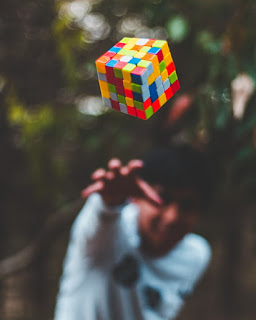Web 2.0 Tools For Problem Finding
 Wait, what? Tech tools for problem finding? Seriously? Don't we have enough problems anyway?
Wait, what? Tech tools for problem finding? Seriously? Don't we have enough problems anyway?Of course we do, but problems urge us - and inspire us - to come up with innovative solutions. Problem finding is one of the key components of computational thinking.
In the classroom students are usually given a problem or a challenge that they have to solve to show their learning and they usually do it in the way we want them to do it, e.g. answer a question, create a comic book, do an experiment. Why not add a bit of unpredictability or randomness to the problems and the way they can be solved? This will make students much more engaged in performing "unexpected" and randomly assigned tasks and activities to present their learning. To do this you can use tools known as learning event generators.
Learning Event Generator - LEG is a tool created by John Davitt. It functions so that it randomly generates problems (DO) as well as different options or ways how to solve that problem (AS), for example:
DO: The parts of speech AS: A finger puppet show
DO: Explain the concept of gravity AS: A food advertisement
DO: The plot of Hamlet AS: A rap song
The main idea behind the LEG is for students to show that they have mastered a concept.
You can get LEG on App store for 1 EUR only. Or you can use Davitt's 200 ways to know - Another Difference Engine for free. This tool is similar to LEG. The only difference is that you type in the problem in the DO section, whereas the activities in the AS section are already provided and you can't change them or add new ones. There are 200 activities that the generator can choose from.
To get inspired, please check out John Davitt's wiki pages with possible DO tasks/ problems and AS activities.
You can also use this great Random Activity Generator in the form of an Excel Workbook created by Richard Clarke on TES. This is a math resource, but you can easily adapt it to your teaching context. Download the Workbook and type as many DOs as you want in one sheet, then add as many ASs in the other. The generator will randomly combine DOs and ASs and make learning unpredictable, different and fun.
Learning Task Generator by Paul Collins, also on TES, is free to download as a PowerPoint presentation. There are 50 different tasks that students can do. You can add slides with more activities. In the classroom just start the slideshow and ask students to say when to pause the slideshow to get their problem and the activity to solve it.
Primary Science Think Bank is an online learning activity generator that includes over 3,600 different learning activities for primary science lessons.
I sometimes use Brainsparker with my students. It's a free creativity app with more than 200 creative prompts to inspire creativity and innovative ideas. It is available for iOS and Android.

